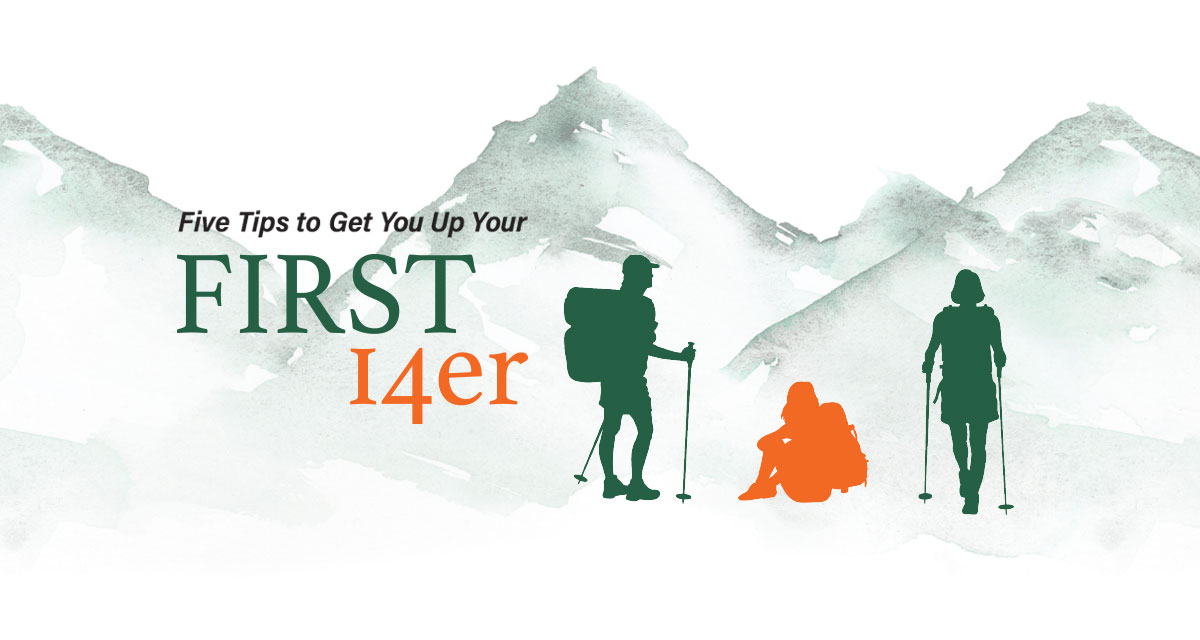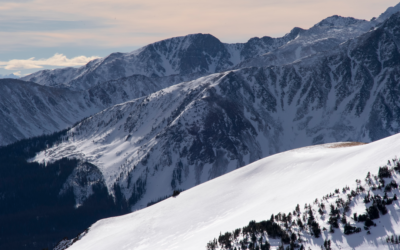Skiing probably still tops the list as Colorado’s most well-known outdoor activity. But summer is my favorite season in our state.
I wonder if that’s true for many longtime residents. Yes, skiing is fun, but to me, it feels like climbing 14ers has at least caught up to skiing as one our favorite activities.
Of course, I’m biased. I’ve climbed all of them and recorded more than 100 ascents of 14ers. My five-year chase of the 14ers was the crux of my peak bagging career.
But I consider myself lucky. I’d already climbed nearly 100 peaks before I began chasing the 14ers. I was 14 the first time I made it up Longs Peak, my first. Since then, my father took me up peaks on many of our vacations to Rocky Mountain National Park. I learned a lot from him and his friends. By the time I started going after the 14ers, many of them were easy compared to a lot of the peaks we’d already climbed in the park. I was ready for the 14ers.
You may not think you’re ready. Well, that’s why I’m here for you. Here are five tips to get you ready for your first 14er.
1. Get in shape. There are many people who climb a 14er straight from the couch. Those people are idiots. That’s like entering a hot-dog eating contest without an appetite. It’s no fun to bust a gut up a 14er when your body isn’t ready for it.
The good news is you don’t need to be Capitan America (or Capitan Marvel). If you can finish a 5K with maybe just a little bit of walking, you’re ready. If you can complete a five-mile hike without whining, or maybe just a little bit of whining, you’re ready. If you can do a Boot Camp class or spin class or Zumba class without wanting to kill the instructor, or maybe just a little bit, you’re ready. Going for a bike ride a couple times a week is a great way to prepare for a 14er. So is hiking. So is walking long distances wearing a backpack.
A solid base of fitness can also prepare you for the unpredictability of the alpine wilderness. If a storm chases you down the trail, or you need to carry a friend’s pack because he twisted his ankle, or the altitude kicks your butt, you’ll be ready. But honestly, the biggest benefit is it’s just a lot more fun to go up a 14er when you aren’t gasping for air.
2. Go easy. There are no “easy” 14ers, but some are a heck of a lot easier than others. I’m amazed at how many people start with Longs Peak (yes, I know that’s what I did, but I was young and foolish) because they can see it from their front porch. Longs Peak, Rocky Mountain National Park’s only 14er, is long, complex and a test of anyone’s endurance, even for ultrarunners such as me. Would you start skiing by bombing down a black diamond? No. Start with a green. Start with Bierstadt, Sherman, Grays and Torreys, Quandary or Antero. Remember, even easy terrain can be difficult: Pikes Peak, in Colorado Springs, has a wide, gentle trail the entire way and a gift store at the top, but up and down is a literal marathon (27 miles roundtrip) and 8,000 feet of elevation gain.
3. Do what works but bring the basics. Times have changed since my first climb up Longs Peak, when I wore heavy boots, a big backpack and a Gore-Tex jacket that was as breathable as a tarp. Therefore, I don’t offer specifics on what you should wear, eat or drink on a 14er.
But here are the basics: Wear warm layers, carry some kind of protection from the rain and wind (such as a jacket) and sturdy footwear (which now can mean trail runners even on the harder peaks). Take a first aid kit to treat blisters, bandage cuts and scrapes and a way to contact someone for help (smartphones may be OK, though a signal isn’t guaranteed).
Eat stuff that sounds really good, and drink plenty of water but maybe a sports drink, too. You can wear a runner’s pack, a backpack or carry a hand bottle up some mountains. There’s a lot of leeway now as long as you’re following the basics. Just don’t wear flip-flops. Yes, I’ve seen that many times and it’s never pretty.
4. Go with a friend or go alone. It’s still ideal if you go up your first 14er with someone who knows what they’re doing, as long as you don’t mind a little mansplaining (I’ve guided before and that’s my specialty). That will always be true. However, going alone used to be a sin, but again, times have changed.
You’ll never be alone on a 14er. In fact, you may feel as if you’re strolling on the 16th Street Mall on the more popular peaks. I climbed some 14ers by myself, and I always ran into people. This should help you feel secure to try a 14er alone, both in case you run into a little trouble or have a question (14ers hikers generally love to help), or if you’re worried about becoming the next subject in a My Favorite Murder podcast, as there’s enough witnesses to discourage any foul play.
5. Learn the Tao of Peakbagging. Times have changed, but the most important rules haven’t:
- You should be on the summit by 10 a.m. (some say noon but earlier is better) to get below tree line before the afternoon thunderstorms hit. Rain makes rocks slippery, hail hurts and lightning is deadly.
- Follow the route and don’t ever take a shortcut. That’s a good way to destroy fragile alpine tundra, get lost or even die, as climbers have perished taking a “shorter way” down.
- Bring more than you think you need: More clothes, more food and more water.
- Leave no trace. Pack everything out, and yes, that means even your dog’s poop or your own.
- The mountain will always be there — If you’re feeling sick (a common problem from the altitude), or a storm’s brewing, or you get hurt, just turn around and try again another day. It’s more mature to realize it’s not your day instead of push on.
MORE INFORMATION ON CLIMBING 14ERS
14ers.com is the best site I know for the basics on climbing any 14er. There’s even a forum for others to answer all your questions.







